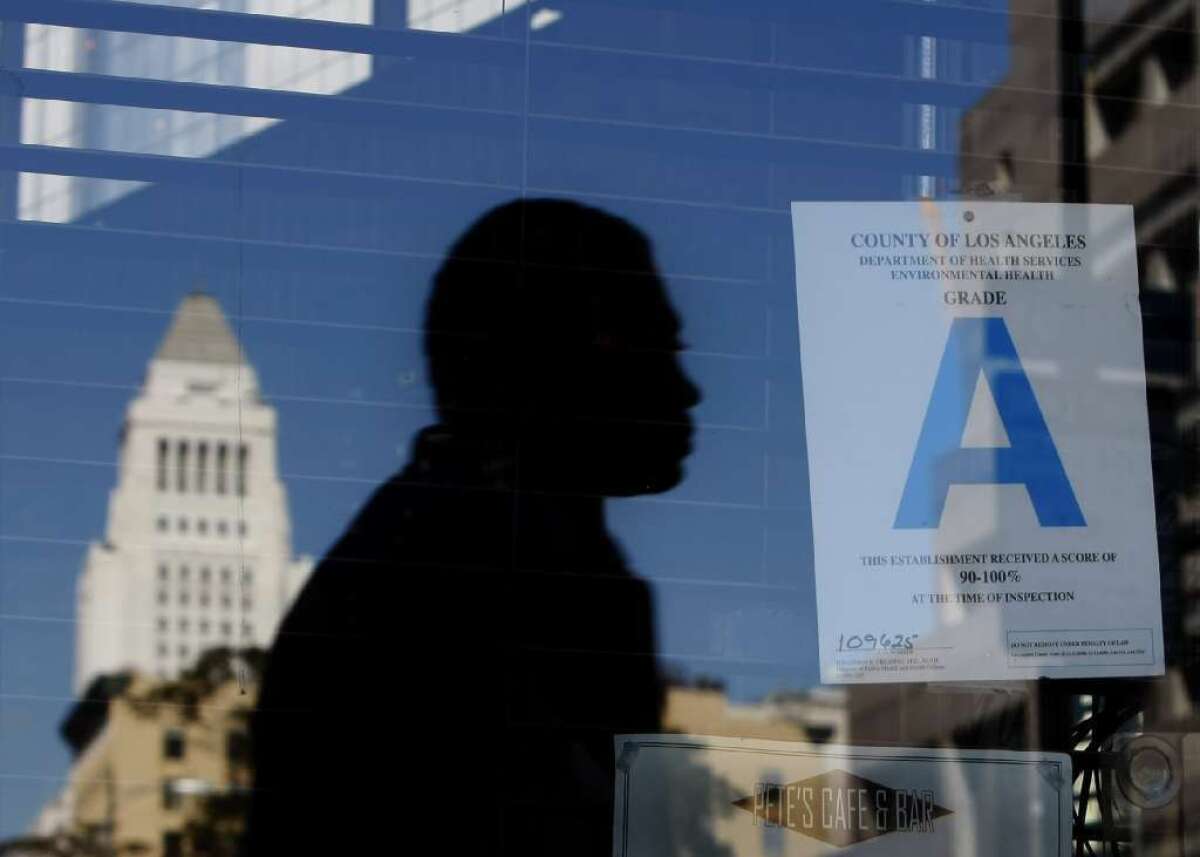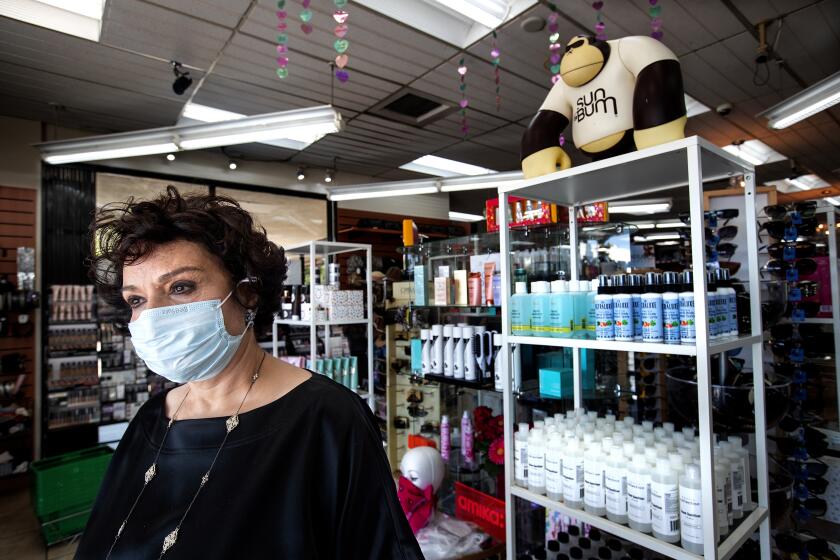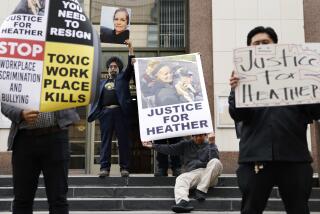Op-Ed: How to determine if a business is COVID-19 safe? Create a restaurant-style grading system

- Share via
Uncertainty and fear of a virulent pathogen are powerful deterrents to social and economic engagement, in addition to the record levels of post-Great Recession unemployment. Nearly 70% of respondents in a national poll published in early May said they were uncomfortable with the idea of shopping in clothing stores and almost 80% expressed misgivings about eating in restaurants, regardless of government reopening plans.
To counter this fear and uncertainty, government standards and a ratings system should be put in place.
Governments would need to provide and enforce specific workplace safety and health standards for businesses in different sectors — such as retail establishments, restaurants and personal-service providers — that would protect workers and customers. Those would be followed by a simple ratings system that communicates to workers and customers which businesses are doing their utmost to protect public health and which ones are treating the novel coronavirus lackadaisically.
Public safety begins with worker safety. The Occupational Safety and Health Administration has failed to issue emergency COVID-19 standards. Instead of enforceable and robust standards, OSHA has offered only loose guidance that it acknowledges “creates no new legal obligations.” As of mid-May, OSHA had received more than 13,600 COVID-19-related complaints but had issued no citations or penalties. The result of that laxity has been rapid COVID-19 spread and death in food processing plants, retail outlets and nursing home facilities in the United States.
Massachusetts General Hospital and some other healthcare facilities that have been at the forefront of COVID-19 treatment have developed work processes to limit cross-contamination.
Public health expert recommendations to minimize worker and consumer exposure include screening, contact tracing, physical distancing at work, training to control infection, and ongoing surveillance to detect illness early. But unions, other worker organizations and consumer groups should not have to rely on the goodwill of businesses.
L.A. is prosecuting more than 70 businesses so far for allegedly flouting COVID-19 rules. The group includes pet groomers, salons and smoke shops.
Instead, these groups should participate in the rapid development and implementation of standards to assure that the concerns of working people and the public are adequately addressed. Since the federal OSHA has so far proved unwilling to ensure the adoption of such process standards, state and city public health authorities should do so.
State and local governments could then grade businesses such as restaurants, grocery stores, hair salons, movie theaters and other retail operations. The grades would be based on their adoption of emergency standards and additional measures they’ve taken to fight COVID-19.
Are they following steps outlined for their industry regarding masks, protective equipment, physical distancing, deep cleaning, adequate ventilation, testing, paid sick leave, reporting employee infections, and whistleblower protection for workers who point out deficiencies?
Over five years, we studied rating and grading systems that rank safety and quality in many industries, including restaurants, health care, banking, education and manufacturing. We found that information was most effective when it is provided where people make choices, and in a way that everyone can understand, regardless of education or language skills.
Long-standing public health disclosure systems in Los Angeles County, New York City and many state and local governments have shown the way. Restaurants are required to post in their windows A, B or C grades for hygiene and food safety that are based on unannounced health department inspections. Inspectors lower grades if they find evidence — such as rodent droppings or unwashed greens — that restaurants aren’t doing enough to prevent food poisoning. These report cards have pressed businesses to become cleaner.
Establishing a similar system of COVID-19 safety grades would encourage consumers to shop and eat where workers and the people they serve are protected, thereby helping to control the spread of the disease. It would enable customers and workers to protect themselves by choosing “A” businesses and workplaces and avoiding those with C grades — just like they do with the restaurant ratings.
The market pressure of consumers looking for “A” businesses would probably motivate employers to do what it takes to earn one. COVID-19 workplace safety standards will vary across different industries and evolve as scientific understanding improves. Child-care centers would obviously need to take different steps than grocery stores or restaurants.
Creating this system would require cash-strapped governments to quickly develop grading standards and expand inspection capacity. But the cost of fearful and uncertain consumers and workers who can’t tell which businesses are safe would be much greater. To start, grades could be introduced in stages, with state and local governments that already require standards taking the lead.
Failing grades would go to places that don’t meet emergency COVID-19 standards. Businesses and workplaces that exceed minimum standards and push the envelope on worker safety and public health would earn good A and B grades.
The grading system could inspire a “race to the top” as businesses seek to adopt the very best practices to prevent the spread of COVID-19.
Once restaurant grading was in place, researchers found that food poisoning declined by 13% in just two years. But over time, grade inflation and lax inspections weakened the system in some jurisdictions. Making businesses transparent about their COVID-19 performance will require robust ongoing enforcement with consequences for noncompliance.
By deciding where they eat, shop and work in the coming months, the American people will help restore the country’s economic vitality. Enforced workplace health and safety standards and a COVID-19 grading system would help them reenter society more confidently.
Archon Fung, David Weil and Mary Graham co-direct the Transparency Policy Project at the Harvard Kennedy School and are the authors of “Full Disclosure.” Fung directs the democracy programs at the Ash Center of the Kennedy School and Weil is dean of the Heller School for Social Policy and Management at Brandeis University.
More to Read
A cure for the common opinion
Get thought-provoking perspectives with our weekly newsletter.
You may occasionally receive promotional content from the Los Angeles Times.











